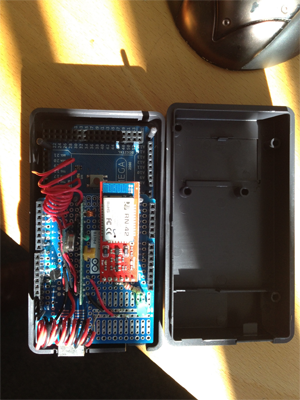Robo-Router
In the “world according to DO”, people and organizations will soon be helped with their daily chores by swarms of intelligent robots. Vacuum cleaning and mopping robots clean the floors of hospitals, UAVs check for forest fires, mobile security cameras keep a look-out for unwanted intruders at night.
Working together
One of the prerequisites for this scenario is that the robots must be able to collaborate; with each other, with other devices (doors, computers, refrigerators) and with their human operators. We don’t want the vacuum cleaner to be in our way when we walk through a room. We don’t want 10 robots cleaning the same spot over and over again. And we don’t want to have to open a door, every time the robot wants to clean a room. So the robots need to be able to talk with each other.
Unfortunately, the actors involved in these scenarios use a variety of different languages, protocols and media. That is why we need a Robo-Router! The Robo-Router would act as an interpreter between humans, robots, and other devices, creating a robot internet.

The Roomba vs the Door
Over the past six months, Enrico, one of our interns from the Hogeschool Rotterdam, worked on one aspect of this problem. His mission: allowing a Roomba to open a door, by triggering the electronic door opener. Since we prefer generically applicable solutions to specific ones, the communication between these two devices would have to go through a Robo- Router, which he helped develop.
Our electronic door opener did not yet have any remote communication capabilities, so we fixed it up with an ATtiny45 with a 433 MHz receiver. Our Roombas are already equipped with a RooTooth from Sparkfun, which gives them Bluetooth capabilities.
Robo-Router
Next step was developing the Robo-Router. For the microcontroller, we chose an Arduino MEGA, since the Robo-Router only needs a minimal amount of memory. And because many Dutch domotica devices use the KaKu (Klik-aan-Klik-uit) protocol, supporting that was one of our first priorities.
Graduation and further development
Enrico finished his internship this month, leaving us with a great proof-of- concept. Our Roomba can now open the door to our meeting room on its own, by sending a command through the Robo-Router.
This does not mean the end of the project, though. We already found a new intern, Michiel, to help us carry on the development. The next step in our mission to connect all robots and devices to the cloud, is to expand our Robo- Router to support other communication protocols, such as 315 MHz and USB.
blog comments powered by Disqus
